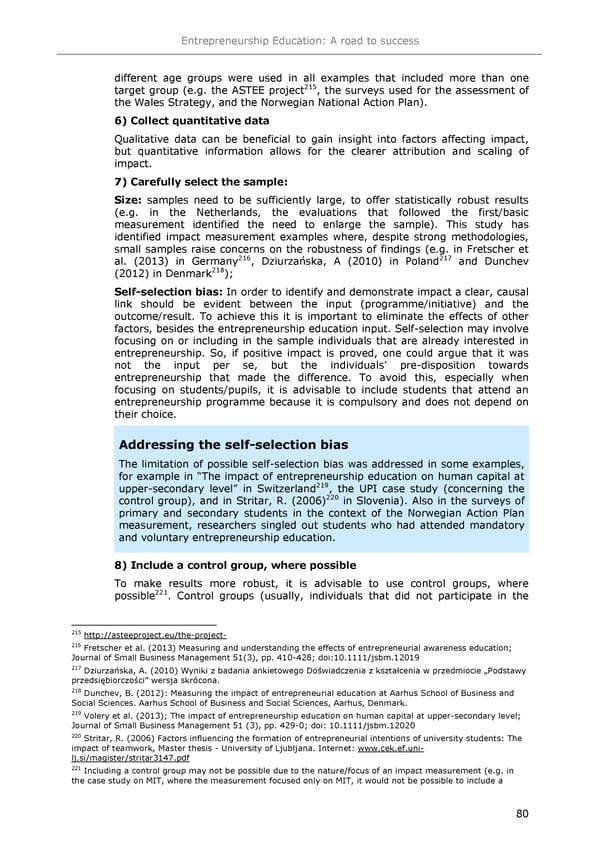Entrepreneurship Education: A road to success different age groups were used in all examples that included more than one 215 target group (e.g. the ASTEE project , the surveys used for the assessment of the Wales Strategy, and the Norwegian National Action Plan). 6) Collect quantitative data Qualitative data can be beneficial to gain insight into factors affecting impact, but quantitative information allows for the clearer attribution and scaling of impact. 7) Carefully select the sample: Size: samples need to be sufficiently large, to offer statistically robust results (e.g. in the Netherlands, the evaluations that followed the first/basic measurement identified the need to enlarge the sample). This study has identified impact measurement examples where, despite strong methodologies, small samples raise concerns on the robustness of findings (e.g. in Fretscher et 216 217 al. (2013) in Germany , Dziurzańska, A (2010) in Poland and Dunchev (2012) in Denmark218); Self-selection bias: In order to identify and demonstrate impact a clear, causal link should be evident between the input (programme/initiative) and the outcome/result. To achieve this it is important to eliminate the effects of other factors, besides the entrepreneurship education input. Self-selection may involve focusing on or including in the sample individuals that are already interested in entrepreneurship. So, if positive impact is proved, one could argue that it was not the input per se, but the individuals9 pre-disposition towards entrepreneurship that made the difference. To avoid this, especially when focusing on students/pupils, it is advisable to include students that attend an entrepreneurship programme because it is compulsory and does not depend on their choice. Addressing the self-selection bias The limitation of possible self-selection bias was addressed in some examples, for example in
 Entrepreneurship Education Page 83 Page 85
Entrepreneurship Education Page 83 Page 85